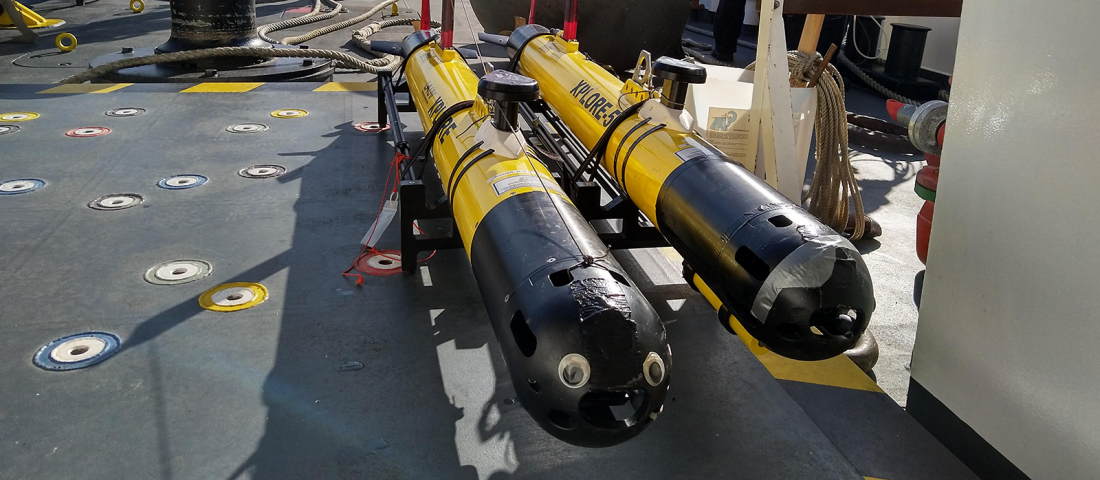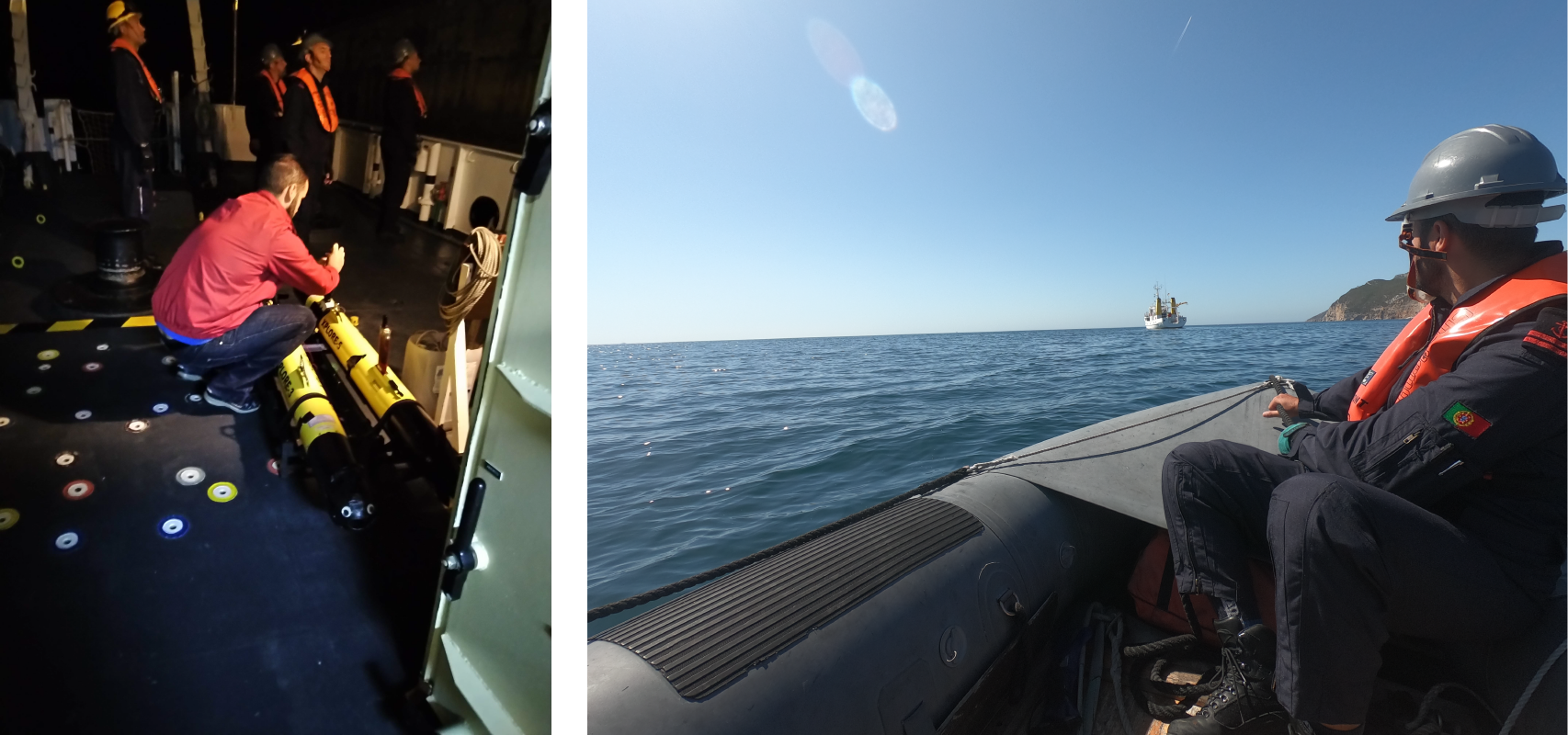
The SaVel exercise had the scientific objective of measuring the outflow of the Sado estuary during a complete tidal cycle. This requires having two AUVs doing a 2.5 km transect synchronously in the front of the river for 13 hours straight.
To operate the AUVs, researchers from LSTS used a mix of Wi-Fi, GSM and Iridium communications. The NRP Andromeda was docked north of the transect executed by the AUVs and within Wi-Fi range of its northeast point, where the vehicles would pop-up and stay at the surface for some minutes. This allowed retrieving all the data collected every two hours. In between the pop-ups, the vehicles were operated using satellite communications and transferred some of the collected data over satellite every 20 minutes (by going at the surface).

To prevent collisions, the AUVs were running a planner onboard that made them strictly follow a plan schedule. This helps predicting the real-time position of the AUVs while completely disconnected. The Ripples software, used to monitor the AUVs is also capable of detecting potential collisions with surface traffic ahead of time, which was key to execute the entire operation safely.
Onboard the NRP Andromeda there was a mixed team of engineers and scientists (namely Sara Cardigos and Renato Mendes from Aveiro University) that helped during the deployment and validating and interpreting the acquired data.

The data was collected but SaVel is still ongoing, as the scientists will now process and integrate the data into existing oceanographic models. Results from previous editions of the same objective have already been published in different conferences such as the 2018 IEEE/OES AUV 2018 and the MTS/IEEE OCEANS 2018.
by José Pinto
